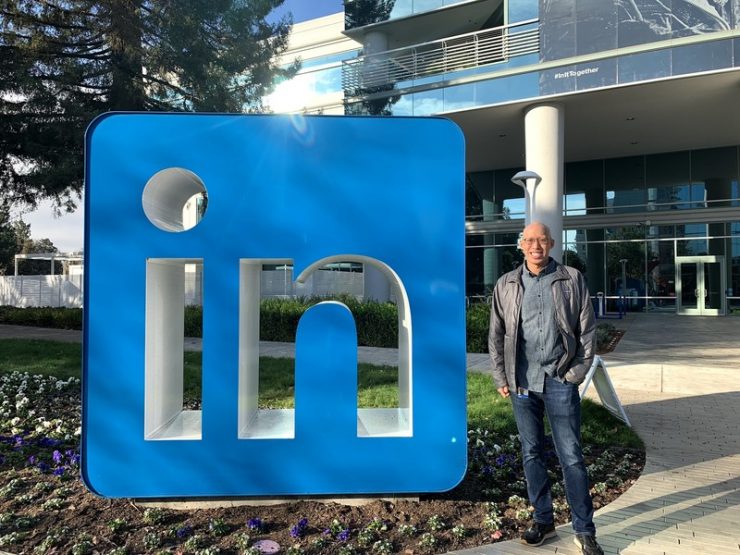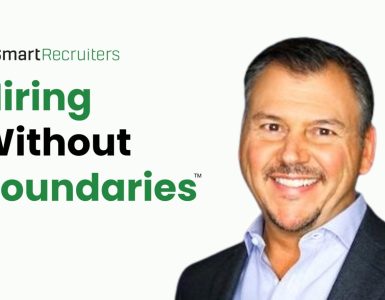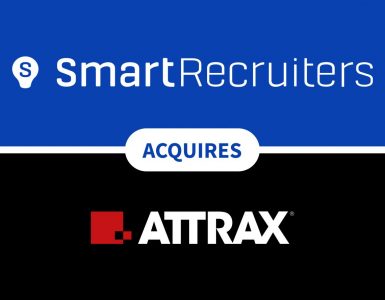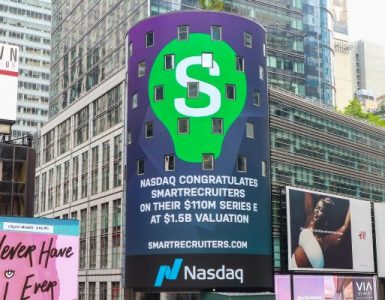We talk people analytics with the TA leader breaking down big data at Hiring Success 19, February 26-27 in San Francisco.
Chris Louie, Senior Director of Talent Acquisition for LinkedIn, didn’t start out in TA. Four years ago this recruiting leader was a product marketer rising through the ranks of Nielsen, the NY-based global performance management company. So, when Chris announced his move to the company’s people function, everyone had the same reaction.. ‘But, why!?’
Where Chris saw an opportunity for innovation and an unscripted future, the rest of the world saw a department with a reputation for being the most corporate of all the corporate functions, ie a dusty snoozefest. As one recruiter so delicately put it “The pros are that you would be part of a new generation of HR leaders; the cons are that HR is still dramatically underpaid and disrespected as a function!”
Yet, none of this well-meaning guff deterred Chris. He saw how critical talent was to business success, and he thought, “If I can e
Chris didn’t know it at the time, but he was actually part of a larger trend of outsiders entering this once insulated field. And, as it often does, his outside experience informed his new work in positive and unexpected ways. Chris began approaching the challenges of HR with the mind of a product marketer, leveraging his penchant for analytics, and working
After three years as Nielsen’s Talent Acquisition and People Analytics, Chris began a new chapter at LinkedIn, taking with him his love of experimentation. Ahead of his session ‘Impact of Analytics in Recruiting’ at Hiring Success 19 – Americas, February 26-27 in San Francisco, we catch up with this industry changemaker to hear what it’s like to be at recruiting’s
What have your first couple months at LinkedIn been like?
I’m part of the talent acquisition team here at LinkedIn. I’m not going to lie, it’s a pretty awesome team…and you would hope so given the brand reputation, right?
At LinkedIn, I am leading the teams that support all of our recruiters, helping them be their best for our hiring managers and candidates. This includes inclusion recruiting, talent attraction, candidate programs, platforms and assessments, project management, and feedback to the LinkedIn product team – so they can make our solutions better both for LinkedIn TA and the broader industry.
You once wrote that TA systems need product managers, not administrators – could you explain this idea?
Software companies don’t just develop a product for clients and walk away. They market the system, support their customers, and think about user experience – honing and evolving solutions over time. However, there’s a tendency to not view internal systems as ‘real products’ and instead just roll them out to employees with no marketing or customer success. That’s why when you look at the NPS of internal systems it’s typically quite low.
My thought is, that we need to bring the same marketing, support, and tracking efforts to these internal systems as we would to the products we deliver to our customers. Internal systems are ‘real products’, and they are critical to business success.
Tell us more about your session at Hiring Success 19 – Americas, what will practitioners walk away with?
The approach I take to people analytics is basically the scientific method. What is the problem statement or challenge that we’re trying to solve? The answer to that question dictates what you should do from an analytic perspective. Start with what you’re trying to accomplish instead of ‘what analysis can I run?’
I really love marrying analytics and talent acquisition, because you can use insights to make decisions and improve processes that payoff immediately. At the end of the day we’re not running analytics to write papers or sit on panels. This is about boosting the experience for everyone – candidates, hiring managers, and recruiters.
All that said, people analytics is still fairly underdeveloped, and only recently have we attained ready access to the data we need. The catalyst has been the digitization of our workflows and the adoption of HR tech that puts capturing data and enabling analytics at their core. But there’s still a ton more we can do.
People tend to be intimidated by the idea of creating an analytics program, do you have to be a math whiz to make sense of your data?
Anybody who’s intimidated by the math of it at all should know it’s really not about the math. We can hire statisticians or programmers to do that. What’s hard is finding people who understand the way HR and TA work today and can identify the real problems and challenges, as well as the root causes.
Could you describe your personal brand in three words?
I guess I would go with connect, care, and create.
Connect: Competing initiatives often pop up in complex organizations and ideas get lost in the shuffle. I strive to be close enough to what’s happening on the ground but also understand enough of the broader narrative to help bring things together – projects, people – so we can accomplish things instead of working at cross-purposes inadvertently. I really enjoy making connections, so that everyone gets to contribute instead of feeling their time has been wasted.
Care: At a really fundamental level, I think the ultimate job of a leader is to help his or her team succeed. And so, when you spend time with anyone on your team, you should spend more time trying to be interested than interesting. I love problem-solving, and anytime I meet with someone on my team, I try to understand what challenges they’re facing and ask how I can help. I’ve been able to progress in my career because people have shown they’ve cared about me. I hope I’m able to pay that back by doing the same for others.
Create: I’m always at my best when I’m trying to create something new or take on a challenge that’s stymied others. If you have the perfect system in place and just need someone to maintain it, then I’m probably the wrong person for the job. I’m continually looking for a fundamentally better way to do things instead of just going through the motions, which is probably one reason why I’ve made relatively dramatic career moves across multiple functions, instead of just progressing linearly in one.
In the wake of the #metoo movement, you suggest HR leaders create their own Hippocratic O
I believe HR should adopt the ‘do no harm’ credo when it comes to the employees they support. While the impression some have is that HR is naturally “the people’s function,” the reality is that practically (given relatively large ratios of employees to HR people) it’s much more aligned with leaders. I think as an industry, we should consider whether HR should have an official responsibility of employee advocacy, which could call for creating a structure where it can have some independence from the leadership – like reporting to the Board. It might be a radical idea, but I think it still merits a discussion.
On a personal level, I guess, my Hippocratic Oath be as an advocate for my team and the candidates.
It’s important to not fall into the trap, as a manager, of viewing your team member’s work in an overly transactional way. That means continually seeing how the people working for you are growing, knowing what their professional goals are, and helping set them up for a positive trajectory. That “care” thing again.
I name candidates as well because they are often the voiceless in the recruiting process. If someone is having a negative candidate experience, they can feel alone and really have no recourse. There’s the one-in-a-hundred candidate who will get an email through to the CEO or CHRO and elicit some action, but that’s pretty rare. Given the numbers, candidates can sometimes get lost in the shuffle unfortunately. You really need to pay attention to this and safeguard the candidate experience and our sense of responsibility to them. At LinkedIn, candidate engagement and experience is extremely important to us, and it’s one of the KPIs we measure to gauge our success.































